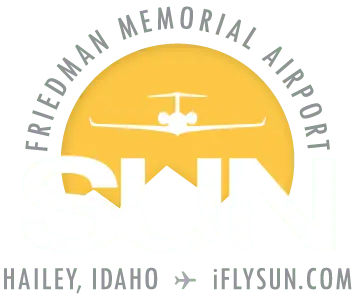
Who remembers “flying” your hand outside of the car window as your parents blew down the interstate at 60+ mph?
I certainly do!
It was fun, right?
Tilt your fingers up and the wind pushed your hand higher. Tilt your fingers down and the wind pushed your hand lower. That’s something those of us in the aviation business like to call lift. Besides being part of one of that Bernoulli guy’s equations, this is how airplanes fly.
Basically, for an aircraft to depart or land at SUN, it must depart or land into the wind and, much like your hand, it needs that slight headwind to generate lift and climb higher. That’s physics, not the FAA.
Which brings me to what many of you have contacted me regarding—and that’s the increased operations to the north over the City of Hailey this summer.
It all comes back to the wind.
Living just north of the airport myself, I too, have observed the increase in activity to the north. I have spoken with our air traffic control tower manager and local pilots several times throughout the summer, and they’ve all told me that the valley has experienced some very unusual and noticeable wind patterns this year—more so than in recent history—that favor both takeoffs and landings to the north, especially for smaller aircraft.
So why is that, you ask?
Safety, It’s as simple as that.
Small aircraft in particular have little to no tolerance for a tailwind. Too much of a tailwind on a small light plane compromises controllability. Larger aircraft have a little more tolerance for a tailwind; in the neighborhood of up to 10 knots, but any more than that it becomes a safety issue and many charter and commercial operators set very specific restrictions that prevent their aircraft from attempting to land or take-off with a tailwind.
Again, all of this is based on safety, not on convenience or malice.
And while the COVID-19 pandemic has taken a toll on our overall operations for the year so far, I have observed an increase in recreational flying this summer, so I’m sure you’re seeing—and hearing—more smaller aircraft out and about, this summer.
What you may not know, is that SUN has a voluntary noise abatement program, meaning we ask our pilot community to follow a set of voluntary guidelines to help lessen the effects of aircraft noise on our neighbors. This program, created in partnership with our pilot community, includes recommended procedures, flight paths, and noise abatement hours as well as asking pilots to avoid landing and departing from and to the north over Hailey—when possible. The guidelines also include other exceptions including other weather, air traffic control instructions, and pilot experience. We frequently remind local tenants and visitors that we have a voluntary program in place.
Now, with that being said, I want to make it clear that while most pilots are respectful and follow these guidelines, there are times when they can’t. And those times include things like wind— like what we are experiencing this summer. And while it might seem like there is no wind in your backyard in Hailey, what is happening at the airport, just a short distance away, can be completely different. For instance, I was sitting on my front porch on a Sunday evening a few weeks ago and about 8:30 p.m. a jet departed to the north. There appeared to be no wind at my house so I checked the weather station at the airport and much to my surprise, 24- mph gusts out of the northwest favoring Runway 31 and the north departure.
So, the next time you see a departure or arrival, especially over the north, think about flying your hand out the window and how the rate of climb or decent changes relative to the speed of the car. Then think about the pilot and the passengers aboard that aircraft, and the decisions that were made to ensure the safety of all concerned, including the community.
As always, I love hearing from our community and better understanding your concerns. I certainly hope the Manger’s Minute helps you better understand our airport.
Blue skies!
Chris Pomeroy
SUN Airport Manager

